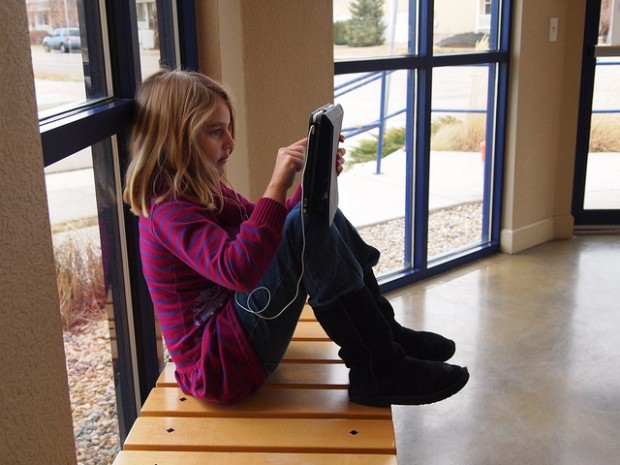By Justin Reich and Beth Holland
The Someday/Monday dichotomy captures one of the core challenges in teacher professional development around education technology. On the one hand, deep integration of new learning technologies into classrooms requires substantially rethinking pedagogy, curriculum, assessment, and teacher practice (someday). For technology to make a real difference in student learning, it can’t just be an add-on. On the other hand, teachers need to start somewhere (Monday), and one of the easiest ways for teachers to get experience with emerging tools is to play and experiment in lightweight ways: to use technology as an add-on. Teachers need to imagine a new future—to build towards Someday—and teachers also need new activities and strategies to try out on Monday. Both pathways are important to teacher growth and meaningful, sustained changes in teaching and learning.
In this four-part series, we’ll use the Someday/Monday template to explore four dimensions of using tablets, such as the iPad, in educational settings, examining how teachers can take students on a journey from consumption of media to curation, creation, and connection. Here, we'll start with consumption.
Part I: Consumption
In the apocryphal photo of the iPad, the tablet rests in the lap of Steve Jobs, sitting on the stage at the iPad release demonstration, reclined in a leather chair. This was a device made for reading and watching, for sitting back, for passively consuming media. One of the signature challenges of the surge of interest in iPads is helping educators imagine the device as more than a library of books or a rolodex of apps, but as a flexible, mobile device for creating multimedia performances of understanding. Educators using iPads should start by thinking about how the device can foster critical reading of text, images, audio, and film, but consumption should be the point of departure on a journey towards more active student engagement.
To oversimplify, there are two kinds of reading that students are asked to do in school settings: focused and connected. In the focused reading mode, we hope young people will engage deeply with a text. As Mark Ott, the chair of the English Department at Deerfield Academy recently told me, “Students used to sit at a desk with nothing but a copy of Thoreau’s Walden and experience sustained engagement with Thoreau’s ideas. We want to preserve that experience in a world where devices are constantly competing for their attention.” Whether the copy of Walden is the $4.99 paperback or the free digital copy from the iBooks library, educators still believe in the importance of focused reading.
In the connected reading mode, we ask students to treat texts as nodes in a network of information. We ask them to quickly synthesize multiple readings and websites in research projects. To follow contemporary media narratives, like the recent violence in Boston, they trace stories across Twitter hashtags, livestreams of police scanners, blog posts, and newspaper articles. We ask them to read in communal settings, leveraging social technologies to allow users to share notes, highlighted passages, questions, and ideas. In an extreme form of this connected reading, Diana Kimball, a Fellow at the Berkman Center for Internet & Society at Harvard University, has formed a “24-hour book club” where groups sign up to read the same book in a 24-hour period, using Twitter to share reactions, favorite passages, questions, hunches, and insights.


